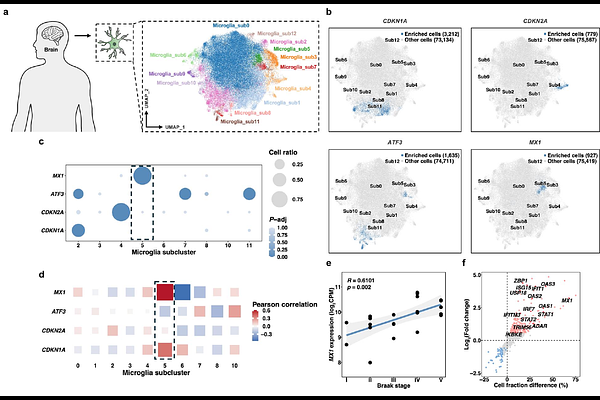Improving Cellular Senescence Detection with Weak Gene Markers in Single-Cell RNA-seq vi Iterative Imputation

Improving Cellular Senescence Detection with Weak Gene Markers in Single-Cell RNA-seq vi Iterative Imputation
Xu, P.; Zhang, H.; Zhu, S.; Kong, Y.
AbstractCellular senescence represents a stable cell cycle arrest state that plays critical roles in tissue aging and age-related pathologies. While single-cell RNA sequencing (scRNA-seq) has enabled comprehensive profiling of millions of cells in aged tissues, reliable identification of senescent cells remains challenging due to the weak and non-specific expression of marker genes. Although existing computational methods could be used to detect active cell states through gene set scoring approaches, their performance with senescence genes has not been rigorously assessed. In this study, we showed that senescence genes display weak, non-specific expression patterns across different tissues and are susceptible to dropout events in scRNA-seq. Current scoring approaches suffered intrinsic limitations in single-cell detection using weakly expressed markers. Simply expanding the gene set of weak markers failed to improve detection accuracy. To overcome these limitations, we developed ICE (Iterative-imputation-based Cell Enrichment), a computational framework that combines expression imputation with iterative marker refinement. ICE achieved a remarkable improvement in detection precision when analyzing pancreatic cells with weakly expressed markers, by increasing accuracy from 56% to 98%. Applied to senescence markers (CDKN1A/p21, CDKN2A/p16, ATF3, and MX1), ICE successfully identified marker-specific cell populations, including stressed {beta} cells in aging and type-I interferon-responsive microglia in Alzheimer\'s disease (AD). Together, our study offered a rigorous analytical framework for single cell detection using markers with weak expressions, which will facilitate in-depth exploration of senescence heterogeneity and temporal dynamics in human tissue and disease states.